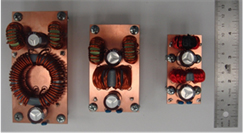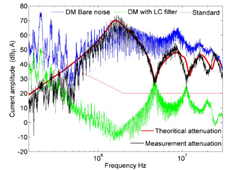LIBRARY
Distributed MPPT Method for Smart Converter PV Systems

In order to avoid interference between different systems, the EMI noise emissions from the power converters need to be limited, and compliance with certain electro-magnetic compatibility (EMC) standards is regularly required. EMI filters are inevitably made part of power electronics systems to provide attenuation for EMI noise, but the additional EMI filter weight may diminish the benefits power electronic converters have over traditional systems, and even make the total weight and size greater. Therefore, it is a big challenge for modern power electronic system design to integrate the power converter and EMI filter together to minimize total weight/size and thus improve system power density.
Minimizing conducted EMI noise to meet the standards often involves trial and error. Despite this prevalent tactic, there have been systematic EMI mitigation techniques and design procedures developed over the years. This paper summarizes some of the authors' research efforts towards improvements in system EMI noise reduction and EMI filter weight/size optimization. The paper addresses several issues and approaches to system EMI modeling, EMI filter design, and weight/size optimization and integration together with examples of the EMI noise measurement results. EMI noise attenuation methods are discussed in detail, and key issues in filter design optimization process are presented and illustrated with the EMI filter test results. Possible improvements in power density through compact filter design and filter integration are also shown. The results are presented in the form of "nuggets" that highlight the basic ideas and their possible impact, but do not provide great detail on the technical contributions - these details can be found in the referenced papers.























































































